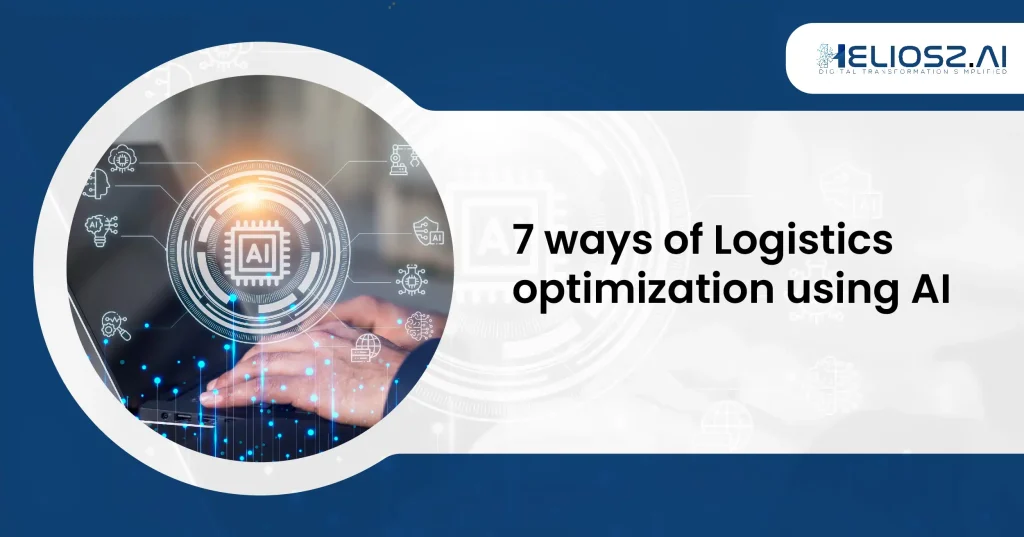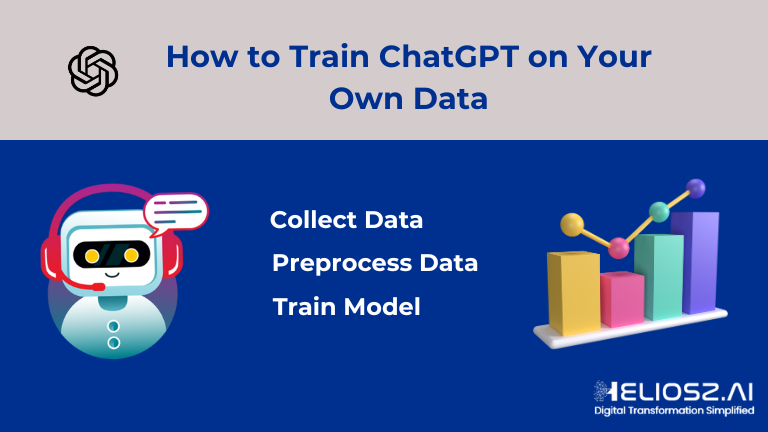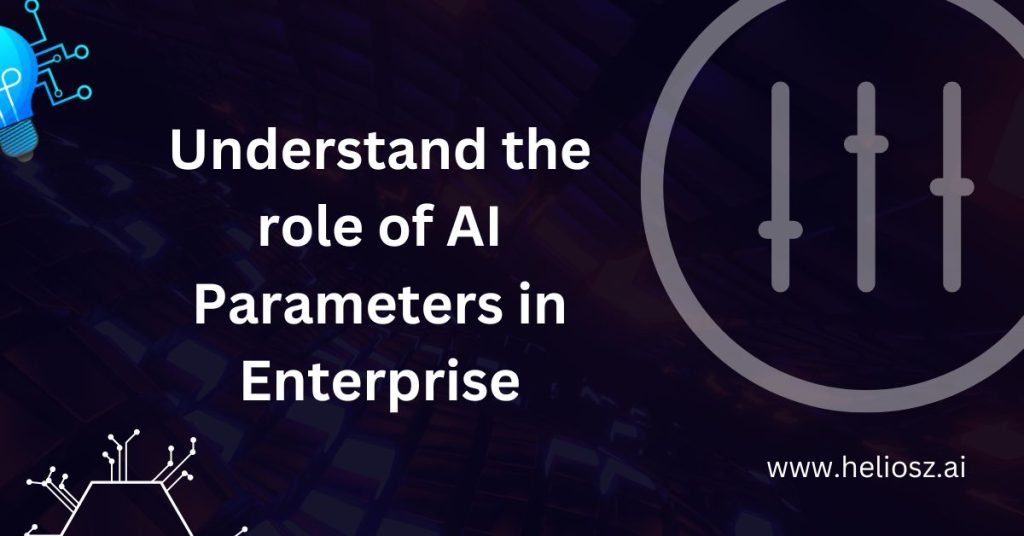
Logistics is a very important aspect of the global market. It is the only superhighway that ensures the smooth shipment of products and services from origin to destination. Nevertheless, conventional logistics approaches are becoming less capable of meeting the requirements of current highly complex supply chains.
AI is a game-changer for the industry since businesses will be in a better position to utilize their logistics processes in a multifaceted manner that was once thought unrealistic, leading to a surge in efficiency, precision, and customer satisfaction that has never been seen before.
This article contains the top AI-powered techniques for logistics optimization, offering insights into how AI is revolutionizing the industry and setting new standards for operational excellence.
Table of Contents
- What is Logistics Optimization?
- Challenges in Logistics Businesses without AI Techniques
- Key 7 AI-Powered Logistics Optimization Techniques
- 1. Demand Forecasting and Inventory Management
- 2. Route Optimization and Vehicle Scheduling
- 3. Warehouse Management and Automation
- 4. Supply Chain Visibility and Collaboration
- 5. Last-Mile Delivery Optimization
- 6. Autonomous Vehicles and Drones
- 7. Customer Experience Enhancement
- Optimizing Logistics Efficiency with Heliosz.AI
- Final Thoughts
What is Logistics Optimization?
Logistics optimization is a process that involves organizing the transport, storage, and movement of goods, services, and information through a supply chain in a way that makes the chain less cumbersome.
It implies the coordination of their appropriate operations with logistics, which are cost-effective and responsive to the customers. Logistics optimization chiefly aims at planning the logistics of supply chains more efficiently which in turn reduces the delays, lowers the costs, and improves the overall service level.
Get AI-powered logistics today with Heliosz.AI and optimize your supply chain. Get Started Now!
Challenges in Logistics Businesses without AI Techniques
With AI-based methods, logistics companies unfairly cope with numerous problems that are the cause of low productivity and low profit margins.
There is a constant domination of manual processes, and this is exactly what results in mistakes, inefficiency, and the impossibility of a company reacting shortly to market changes. There are many cases of incorrect inventory management that, in turn, can lead to a basketball in the warehouse or an overstock problem.
The failure of planning is mostly because a clearly defined path is not presented, thus, the company bears an additional cost of fuel, delays, and losses to the fleet. On the other hand, the lack of the ability to access data in real-time along the whole supply chain network makes it tough to translate vision into action and thus get to the root cause of the problem quickly. This approach should adapt to the changing situation in the global market.
Key 7 AI-Powered Logistics Optimization Techniques
1. Demand Forecasting and Inventory Management
Forecasting using artificial intelligence is done by using advanced algorithms and machine learning models to predict future demand. Thanks to this, businesses will thus be able to determine with great precision the volume of inventory they need.
This is possible by examining large datasets containing the history of sales, market trends, and other external factors such as economic indicators, which influence the total price. This predicts optimal inventory levels minimizes unnecessary items in stock and, at the same time, avoids a situation with not enough items in stock.
In addition, on-the-spot AI will auto-correct inaccurate forecasts, quickening the ability of businesses to face and solve the changes in demand. It also helps companies prepare for changes with the seasons, shifts in the market, and sudden jumps in demand.
This ability to adapt on the fly lets businesses react when things change out of the blue, which cuts down on problems in the supply chain.
2. Route Optimization and Vehicle Scheduling
To maximize efficiency, AI-based route optimization and vehicle scheduling are utilized by selecting those routes for delivery that are the most fruitful. The algorithms, in particular, traffic states, delivery schedules, and vehicle capacity are some of the crucial elements that are employed to get the minimum amount of fuel used and, in turn, reduce delivery time.
Artificial Intelligence promotes one more way by changing the routes according to the scenario, thus ensuring the avoidance of delays, which in turn will make logistics much more flexible and cost-effective.
Along with the application of AI in vehicle scheduling, there arise significant savings in the costs and improvements in the services. Companies can cut down their carbon emissions by using less fuel with better-planned routes.
When it comes to scheduling vehicles, AI can also take into account maintenance timetables to steer clear of breakdowns and holdups, which makes logistics run even smoother.
3. Warehouse Management and Automation
In distribution centers, the implementation of advanced algorithms enhances the efficiency of the system through different forms of automation and intelligence.
Robots, which are powered by AI, can perform monotonous work, such as taking, packaging, and arranging with extreme precision, and consequently, human error is reduced. Besides, AI-enhanced warehouse management systems can dynamically rearrange the goods in the warehouse, thereby producing higher rates of retrieval and space utilization.
The employment of AI makes warehousing centers to be more adaptive due to which they can manage greater order volumes in a more timely and accurate manner.
4. Supply Chain Visibility and Collaboration
AI is what provides end-to-end visibility across the supply chain, it enables real-time access to logistics and stability in the logistics process.
The use of AI-powered platforms allows the parties involved to be aware of the status of the shipments, the levels of stock, as well as the likely hindrances. Moreover, improved visibility allows firms to practice proactive dispositions through risk reduction and optimal supply chain operations.
Also, it can be said that the corporation providers as well as the manufacturers and distributors also benefit as the process of the production of the goods is facilitated. It’s also possible to foresee potential supply chain issues, like delays from suppliers or production holdups.
This ability to predict allows businesses to take action ahead of time reducing risks before they get worse. Tools powered by AI for working together also boost communication among different parties involved leading to smoother operations between makers, suppliers, and distributors. By having up-to-the-minute insights and analytics that look ahead, companies can make quicker, better-informed choices that make the most of both cost and productivity across the whole supply chain.
5. Last-Mile Delivery Optimization
The final step in delivery is in most cases the most expensive and difficult part of the entire logistics process. Using AI to optimize last-mile delivery involves the application of advanced algorithms to plan the most efficient delivery routes that consider aspects such as customer location, traffic patterns, and the customer’s product delivery preferences.
AI also provides real-time tracking and communication with customers, contributing to the improvement of the delivery experience. As it stands, by fine-tuning last-mile delivery, businesses are in a position to slash costs as well as raise customer satisfaction levels.
6. Autonomous Vehicles and Drones
The use of autonomous vehicles and drones has made it possible for companies to deliver goods faster and cheaper. For example, self-contained vehicles machine-empowered can transport the package to the destination point without any interventions from humans.
In addition, vehicles equipped with AI navigation technology can overcome the difficulties of reaching remote or jammed places, which usually occurs when using traditional delivery methods.
Delivery speed and precision aside, autonomous vehicles and drones can be a game-changer by introducing environmentally friendly and scalable elements into such tech.
7. Customer Experience Enhancement
In logistics, AI is the main booster to enhance the customer experience. AI is behind the curtain of custom declaration, real-time track and trace of parcels as well as responding to all inquiries. AI, by analyzing customer data, can come up with personalized products, calculate the delivery times precisely, and intervene in problems before they escalate.
It results in high customer satisfaction and their loyalty to business is improved since consistent customer expectation scores are received.
Besides, AI-driven customer support tools such as AI chatbots and virtual assistants handle frequent queries without human intervention with the ability to do so 24/7.
Customer insights will enable AI to predict future preferences for personalized recommendations and services. AI improves each touchpoint in the journey of a customer by automating it and meanwhile fostering reduced response times, transparency, and frictionless customer experience, which leads to long-term loyalty and improves retention rates.
Curious about how AI can transform your logistics? Request a Free AI Consultation!
Optimizing Logistics Efficiency with Heliosz.AI
Heliosz.AI stands as a prime example of how AI can revolutionize logistics optimization. With the help of advanced AI-based solutions by Heliosz.AI, the company can place resources most efficiently, thus leaving the way for a fully automated production line.
It is the only AI-driven solution provider with real-time analytic and predictive focusing which translates into a company’s ability to cut losses, thus enabling them to come up with reasonable choices to realize cost efficiencies, and service improvements, amongst others.
In a logistic landscape that is experiencing such a drastic change, depending on stale procedures is no longer sound; Heliosz.AI briefs companies in such a way that they become armed against all difficulties and tour the way of efficiency at a level that is rare among equals.
Final Thoughts
AI has become an inevitable weapon in the process of optimizing logistics operations. From enhancing demand forecasting and inventory management to transforming last-mile delivery and customer experience, AI offers essential solutions that face the complications of modern industrial chains.
While AI technology keeps changing, its influence on logistics will only increase, thus creating further innovation and effectiveness in the industry.
The businesses that will accept the improvement of AI-driven logistics will not only lead the competition but also, they will have certainty for future sustainability and achievement in the rapidly changing and high-demand global market.


